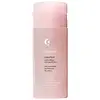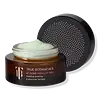What's inside
What's inside
 Key Ingredients
Key Ingredients

 Benefits
Benefits

 Concerns
Concerns

 Ingredients Side-by-side
Ingredients Side-by-side

Water
Skin ConditioningSodium Hydroxide
BufferingLactic Acid
BufferingGlycolic Acid
BufferingGluconolactone
Skin ConditioningPropanediol
SolventPentylene Glycol
Skin ConditioningMagnesium Chloride
Glycerin
HumectantSalicylic Acid
MaskingNiacinamide
SmoothingAloe Barbadensis Leaf Juice
Skin ConditioningEthylhexylglycerin
Skin ConditioningCitric Acid
BufferingPhytic Acid
Polysorbate 20
EmulsifyingAmylopectin
Polydextrose
HumectantDextrin
AbsorbentCaprylyl Glycol
EmollientWater, Sodium Hydroxide, Lactic Acid, Glycolic Acid, Gluconolactone, Propanediol, Pentylene Glycol, Magnesium Chloride, Glycerin, Salicylic Acid, Niacinamide, Aloe Barbadensis Leaf Juice, Ethylhexylglycerin, Citric Acid, Phytic Acid, Polysorbate 20, Amylopectin, Polydextrose, Dextrin, Caprylyl Glycol
Glycolic Acid
BufferingPropanediol
SolventCamellia Sinensis Leaf Extract
AntimicrobialWater
Skin ConditioningSodium Hydroxide
BufferingSalicylic Acid
MaskingAloe Barbadensis Leaf Juice
Skin ConditioningGlyceryl Oleate Citrate
EmulsifyingShorea Stenoptera Seed Butter
EmollientXanthan Gum
EmulsifyingPhenethyl Alcohol
MaskingRosmarinus Officinalis Leaf Extract
AntimicrobialButyrospermum Parkii Butter
Skin ConditioningCaprylic/Capric Triglyceride
MaskingEthylhexylglycerin
Skin ConditioningCitrus Aurantium Bergamia Peel Oil
Boswellia Carterii Oil
MaskingCitrus Aurantium Dulcis Peel Oil
MaskingCopaifera Officinalis Resin Oil
MaskingLavandula Angustifolia Oil
MaskingMentha Spicata Herb Oil
PerfumingPogostemon Cablin Leaf Oil
MaskingMagnesium Chloride
Tricaprylyl Citrate
EmollientTripotassium Phosphate
BufferingGluconolactone
Skin ConditioningTranexamic Acid
AstringentMelia Azadirachta Leaf Extract
Skin ConditioningMelia Azadirachta Flower Extract
Skin ConditioningCorallina Officinalis Extract
Skin ConditioningCoccinia Indica Fruit Extract
Skin ConditioningSolanum Melongena Fruit Extract
Skin ConditioningAloe Barbadensis Flower Extract
EmollientSimmondsia Chinensis Seed Oil
EmollientOcimum Basilicum Flower/Leaf Extract
TonicCurcuma Longa Root Extract
MaskingOcimum Sanctum Leaf Extract
Skin ConditioningMoringa Oleifera Seed Oil
EmollientAmber Powder
Glycolic Acid, Propanediol, Camellia Sinensis Leaf Extract, Water, Sodium Hydroxide, Salicylic Acid, Aloe Barbadensis Leaf Juice, Glyceryl Oleate Citrate, Shorea Stenoptera Seed Butter, Xanthan Gum, Phenethyl Alcohol, Rosmarinus Officinalis Leaf Extract, Butyrospermum Parkii Butter, Caprylic/Capric Triglyceride, Ethylhexylglycerin, Citrus Aurantium Bergamia Peel Oil, Boswellia Carterii Oil, Citrus Aurantium Dulcis Peel Oil, Copaifera Officinalis Resin Oil, Lavandula Angustifolia Oil, Mentha Spicata Herb Oil, Pogostemon Cablin Leaf Oil, Magnesium Chloride, Tricaprylyl Citrate, Tripotassium Phosphate, Gluconolactone, Tranexamic Acid, Melia Azadirachta Leaf Extract, Melia Azadirachta Flower Extract, Corallina Officinalis Extract, Coccinia Indica Fruit Extract, Solanum Melongena Fruit Extract, Aloe Barbadensis Flower Extract, Simmondsia Chinensis Seed Oil, Ocimum Basilicum Flower/Leaf Extract, Curcuma Longa Root Extract, Ocimum Sanctum Leaf Extract, Moringa Oleifera Seed Oil, Amber Powder
 Reviews
Reviews

Ingredients Explained
These ingredients are found in both products.
Ingredients higher up in an ingredient list are typically present in a larger amount.
Aloe Barbadensis Leaf Juice comes from leaves of the aloe plant. Aloe Barbadensis Leaf Juice is best known for helping to soothe sunburns. It is also anti-inflammatory, moisturizing, antiseptic, and can help heal wounds.
Aloe is packed with good stuff including Vitamins A, C, and E. These vitamins are antioxidants, which help fight free-radicals and the damage they may cause. Free-radicals are molecules that may damage your skin cells, such as pollution.
Aloe Barbadensis Leaf Juice also contains sugars. These sugars come in the form of monosaccharides and polysaccharides, folic acid, and choline. These sugars are able to help bind moisture to skin.
It also contains minerals such as calcium, 12 anthraquinones, fatty acids, amino acids, and Vitamin B12.
Learn more about Aloe Barbadensis Leaf JuiceEthylhexylglycerin (we can't pronounce this either) is commonly used as a preservative and skin softener. It is derived from glyceryl.
You might see Ethylhexylglycerin often paired with other preservatives such as phenoxyethanol. Ethylhexylglycerin has been found to increase the effectiveness of these other preservatives.
Gluconolactone is a PHA. PHAs are a great gentle alternative to traditional AHAs.
When applied, Gluconolactone has the same affect on skin as AHAs such as lactic acid. It helps dissolve the dead skin cells in the top layer of your skin. This improves texture and brightens the skin.
PHAs are more gentle than AHAs due to their larger structure. They do not penetrate as deeply as AHAs and take a longer time to dissolve dead cells. Studies show PHAs do not cause as much irritation.
Gluconolactone has some interesting properties:
In a 2004 study, Gluconolactone was found to prevent UV damage in mouse skin cells and has not been found to increase sun sensitivity. However, we still recommend wearing SPF daily.
This ingredient is is an created by reacting gluconic acid with an alcohol.
Learn more about GluconolactoneGlycolic Acid is arguably the most famous alpha hydroxy acid (AHA) with tons of research backing its benefits.
It is found naturally in sugar cane but the form used in skincare is usually synthetic for purity and stability.
Glycolic acid removes the top layer of dead skin cells to allow newer and fresher ones to emerge.
AHAs work by breaking down the structural “glue” that holds old skin cells in place. When that buildup is gone, your skin can renew itself more efficiently.
Research also shows glycolic acid stimulates collagen production, helping to firm and thicken the skin over time. This is one of its biggest advantages over other AHAs.
Overall, glycolic acid helps with:
Fun fact: Glycolic acid boosts skin hydration by helping it produce molecules that increase hyaluronic acid naturally.
To work best, glycolic acid products should have a pH between 3-4 (that’s where exfoliation is most effective but still gentle on skin).
The pH and concentration of a product are key to its effectiveness:
It is normal to feel a slight stinging sensation when using glycolic acid. This usually fades as your skin adjusts.
Because glycolic acid has the smallest molecular size in the AHA family, it can penetrate deeper, which enhances its effectiveness but also makes it more likely to irritate sensitive skin.
If your skin is very sensitive or prone to rosacea, glycolic acid may be too strong; in that case, try milder options like lactic acid or a PHA instead.
Recent studies suggest glycolic acid might even help protect against UV damage. But don’t skip sunscreen! Freshly exfoliated skin is more sensitive to the sun.
Glycolic acid is a skincare superstar. It smooths, brightens, hydrates, and firms the skin. Unless you’re highly sensitive, it’s well worth adding to your routine.
Read more about some other popular AHA's here:
Learn more about Glycolic AcidWe don't have a description for Magnesium Chloride yet.
Propanediol is an all-star ingredient. It softens, hydrates, and smooths the skin.
It’s often used to:
Propanediol is not likely to cause sensitivity and considered safe to use. It is derived from corn or petroleum with a clear color and no scent.
Learn more about PropanediolSalicylic Acid (also known as beta hydroxy acid or BHA) is a well-known ingredient for treating skin that struggles with acne and clogged pores. It exfoliates both the skin's surface and deep within the pores to help clear out buildup, control oil, and reduce inflammation.
Unlike AHAs (alpha hydroxy acids), salicylic acid is oil-soluble. This allows it to penetrate into pores which makes it especially effective for treating blackheads and preventing future breakouts.
Salicylic acid is also known for its soothing properties. It has a similar structure to aspirin and can calm inflamed or irritated skin, making it a good option for acne-prone skin that is also sensitive.
Concentrations of 0.5-2% are recognized by the U.S. FDA as an over-the-counter topical acne product.
It can cause irritation and/or dryness if one's skin already has a compromised moisture barrier, so it's best to focus on repairing that before introducing this ingredient into your routine.
While salicylic acid does not increase sun sensitivity, it’s still important to wear sunscreen daily to protect your skin.
If you are looking for the ingredient called BHA or Butylated Hydroxyanisole, click here.
Learn more about Salicylic AcidSodium Hydroxide is also known as lye or caustic soda. It is used to adjust the pH of products; many ingredients require a specific pH to be effective.
In small amounts, sodium hydroxide is considered safe to use. However, large amounts may cause chemical burns due to its high alkaline.
Your skin has a natural pH and acid mantle. This acid mantle helps prevent harmful bacteria from breaking through. The acid mantle also helps keep your skin hydrated.
"Alkaline" refers to a high pH level. A low pH level would be considered acidic.
Learn more about Sodium HydroxideWater. It's the most common cosmetic ingredient of all. You'll usually see it at the top of ingredient lists, meaning that it makes up the largest part of the product.
So why is it so popular? Water most often acts as a solvent - this means that it helps dissolve other ingredients into the formulation.
You'll also recognize water as that liquid we all need to stay alive. If you see this, drink a glass of water. Stay hydrated!
Learn more about Water